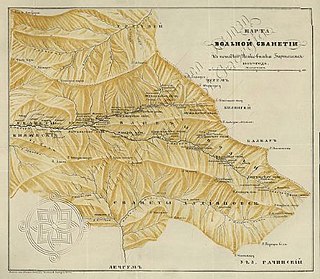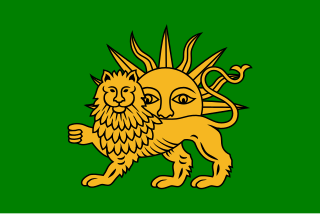 W
WThe Principality of Abkhazia emerged as a separate feudal entity in the 15th-16th centuries, amid the civil wars in the Kingdom of Georgia that concluded with the dissolution of the unified Georgian monarchy. The principality retained a degree of autonomy under the Ottoman, and then the Russian rule, but was eventually absorbed into the Russian Empire in 1864.
 W
WThe Afsharid dynasty was an Iranian dynasty that originated from the Turkoman Afshar tribe in Iran's north-eastern province of Khorasan, ruling Iran (Persia) in the mid-eighteenth century. The dynasty was founded in 1736 by the brilliant military commander Nader Shah, who deposed the last member of the Safavid dynasty and proclaimed himself as the Shah of Iran.
 W
WFree Svaneti was a name applied to the self-governing communities of Svan highlanders, originally coined by the Imperial Russian officials and explorers of the Caucasus. These communities formed a loose confederation with a clan-based traditional system of law. As a quasi-autonomous region, Free Svaneti probably emerged with the decline of Georgian feudalism in the 15th century and was devoid of any centralized government until being subjected to the Russian Empire in 1853. The last vestiges of the Svan self-rule was brought to an end by the Russian military in 1876.
 W
WAbazi was a Georgian silver coin, deriving its name and existence from the Iranian abbasi, which was in use from the early 17th century into the early 19th.
 W
WThe Second Kingdom of Kakheti was a late medieval/early modern monarchy in eastern Georgia, centered at the province of Kakheti, with its capital first at Gremi and then at Telavi. It emerged in the process of a tripartite division of the Kingdom of Georgia in 1465 and existed, with several brief intermissions, until 1762 when Kakheti and the neighboring Georgian kingdom of Kartli were merged through a dynastic succession under the Kakhetian branch of the Bagrationi dynasty. Through most of its turbulent history, Kakheti was tributary to the Persians, whose efforts to keep the reluctant Georgian kingdom within its sphere of influence resulted in a series of military conflicts and deportations.
 W
WThe Kingdom of Kartli was a late medieval/early modern monarchy in eastern Georgia, centred on the province of Kartli, with its capital at Tbilisi. It emerged in the process of a tripartite division of the Kingdom of Georgia in 1478 and existed, with several brief intervals, until 1762 when Kartli and the neighbouring Georgian kingdom of Kakheti were merged through dynastic succession under the Kakhetian branch of the Bagrationi dynasty. Through much of this period, the kingdom was a vassal of the successive dynasties of Iran, but enjoyed intermittent periods of greater independence, especially after 1747.
 W
WThe Kingdom of Kartli-Kakheti (1762–1801) was created in 1762 by the unification of two eastern Georgian kingdoms of Kartli and Kakheti. From the early 16th century, according to the 1555 Peace of Amasya, these two kingdoms were under Iranian control. In 1744, Nader Shah granted the kingship of Kartli to Teimuraz II and that of Kakheti to his son Heraclius II, as a reward for their loyalty. When Nader Shah died in 1747, Teimuraz II and Heraclius II capitalized on the instability in Iran proper, and declared de facto independence. After Teimuraz II died in 1762, Heraclius succeeded him as ruler of Kartli, thus unifying the two.
 W
WLekianoba was the name given to sporadic forays and marauds by Dagestani people into Georgia from the 16th to the 19th centuries. The term is derived from Leki by which the Georgians knew Dagestani peoples, with the suffix –anoba which designates attribution. The references to these raids appear in the Epic poetry of Avars; the names of rulers who lead the most devastating attacks, Umma-Khan, Nursal-Bek, and Mallachi, are mentioned in Georgian sources.
 W
WMamluk is a term most commonly referring either to slave soldiers, freed slaves, Muslim converts assigned to military and administrative duties, and Muslim rulers of slave origin.
 W
WQajar Iran, also referred to as Qajar Persia, the Qajar Empire, officially the Sublime State of Persia and also known then as the Guarded Domains of Persia, was an Iranian empire ruled by the Qajar dynasty, which was of Turkic origin, specifically from the Qajar tribe, from 1789 to 1925. The Qajar family took full control of Iran in 1794, deposing Lotf 'Ali Khan, the last Shah of the Zand dynasty, and re-asserted Iranian sovereignty over large parts of the Caucasus. In 1796, Mohammad Khan Qajar seized Mashhad with ease, putting an end to the Afsharid dynasty, and Mohammad Khan was formally crowned as Shah after his punitive campaign against Iran's Georgian subjects. In the Caucasus, the Qajar dynasty permanently lost many of Iran's integral areas to the Russian Empire over the course of the 19th century, comprising modern-day Georgia, Dagestan, Azerbaijan and Armenia.
 W
WThe Safavid dynasty was one of the most significant ruling dynasties of Iran from 1501 to 1736. The Safavid dynasty had its origin in the Safavid order of Sufism, which was established in the city of Ardabil in the Iranian Azerbaijan region. It was an Iranian dynasty of Kurdish origin, but during their rule they intermarried with Turkoman, Georgian, Circassian, and Pontic Greek dignitaries. From their base in Ardabil, the Safavids established control over parts of Greater Iran and reasserted the Iranian identity of the region, thus becoming the first native dynasty since the Sasanian Empire to establish a national state officially known as Iran.
 W
WThe Treaty of Finckenstein, often spelled Finkenstein, was a treaty concluded between France and Persia in the Finckenstein Palace on 4 May 1807 and formalised the Franco-Persian alliance.